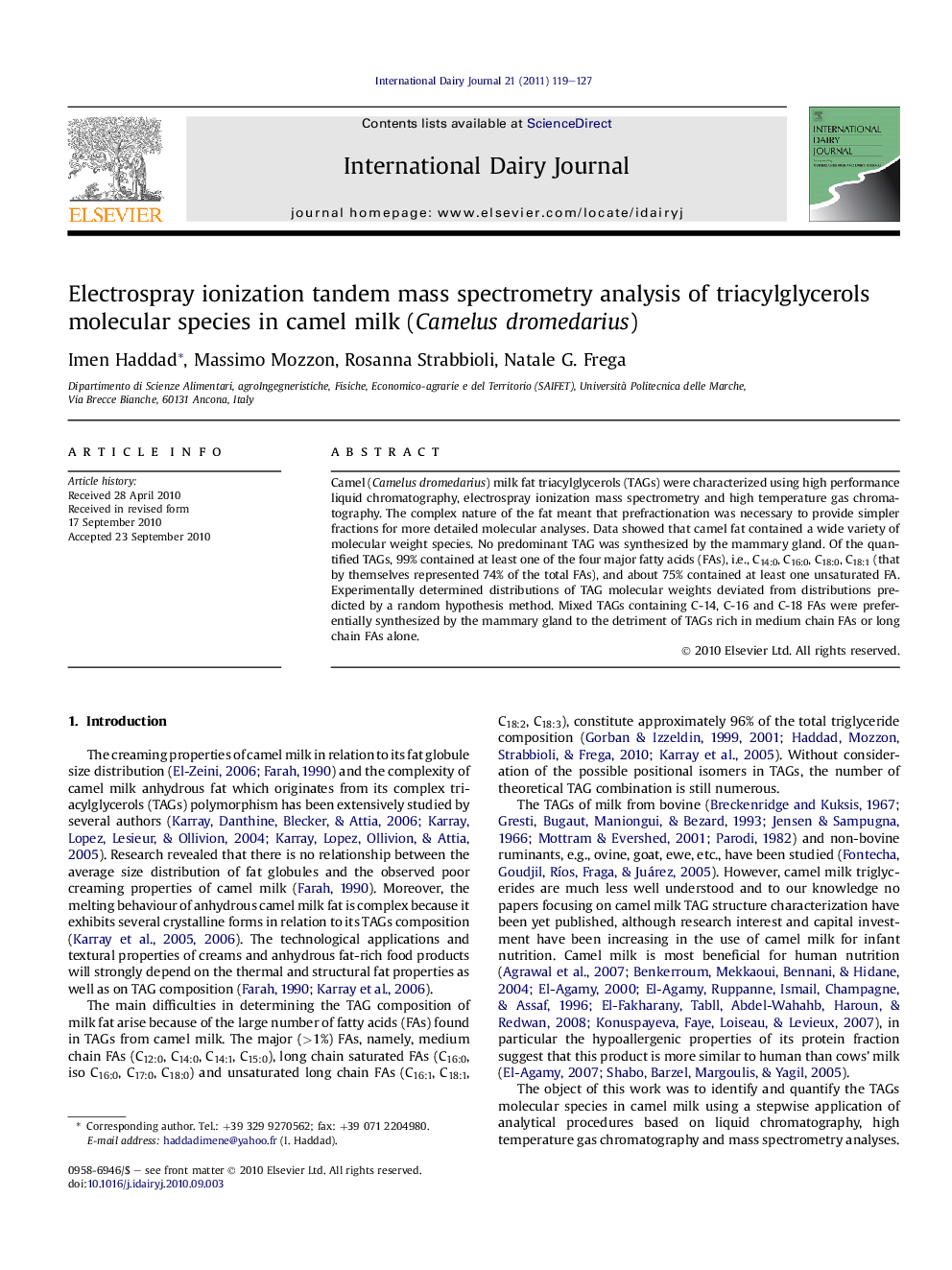| Article ID | Journal | Published Year | Pages | File Type |
|---|---|---|---|---|
| 10972348 | International Dairy Journal | 2011 | 9 Pages |
Abstract
Camel (Camelus dromedarius) milk fat triacylglycerols (TAGs) were characterized using high performance liquid chromatography, electrospray ionization mass spectrometry and high temperature gas chromatography. The complex nature of the fat meant that prefractionation was necessary to provide simpler fractions for more detailed molecular analyses. Data showed that camel fat contained a wide variety of molecular weight species. No predominant TAG was synthesized by the mammary gland. Of the quantified TAGs, 99% contained at least one of the four major fatty acids (FAs), i.e., C14:0, C16:0, C18:0, C18:1 (that by themselves represented 74% of the total FAs), and about 75% contained at least one unsaturated FA. Experimentally determined distributions of TAG molecular weights deviated from distributions predicted by a random hypothesis method. Mixed TAGs containing C-14, C-16 and C-18 FAs were preferentially synthesized by the mammary gland to the detriment of TAGs rich in medium chain FAs or long chain FAs alone.
Related Topics
Life Sciences
Agricultural and Biological Sciences
Food Science
Authors
Imen Haddad, Massimo Mozzon, Rosanna Strabbioli, Natale G. Frega,
